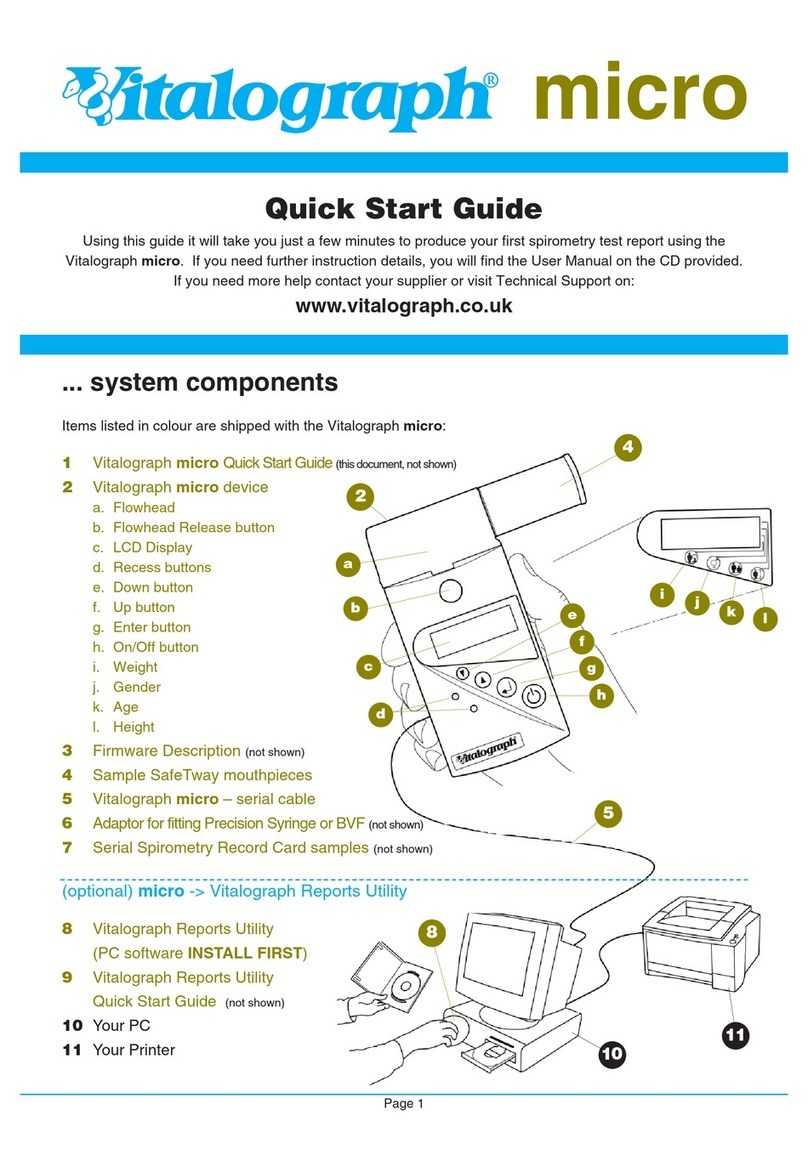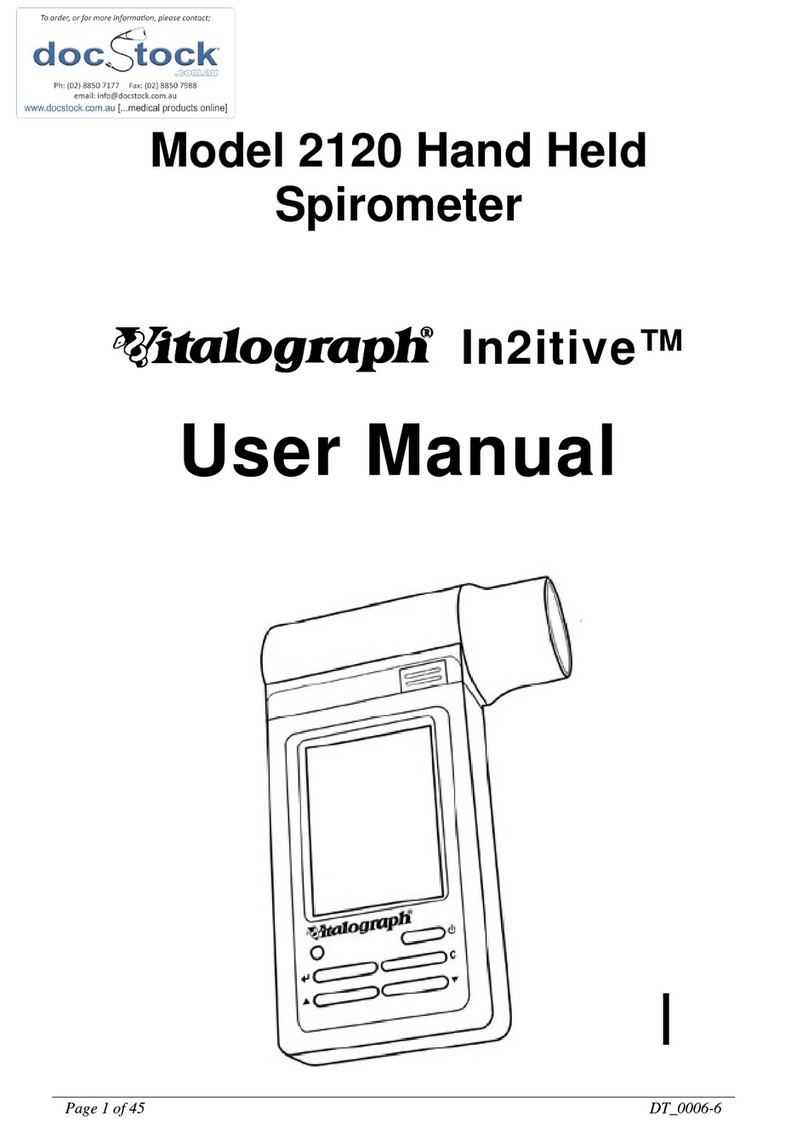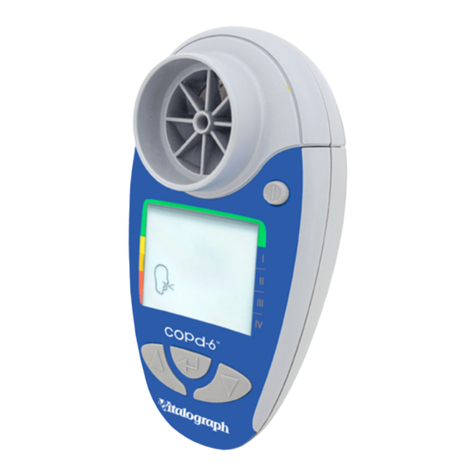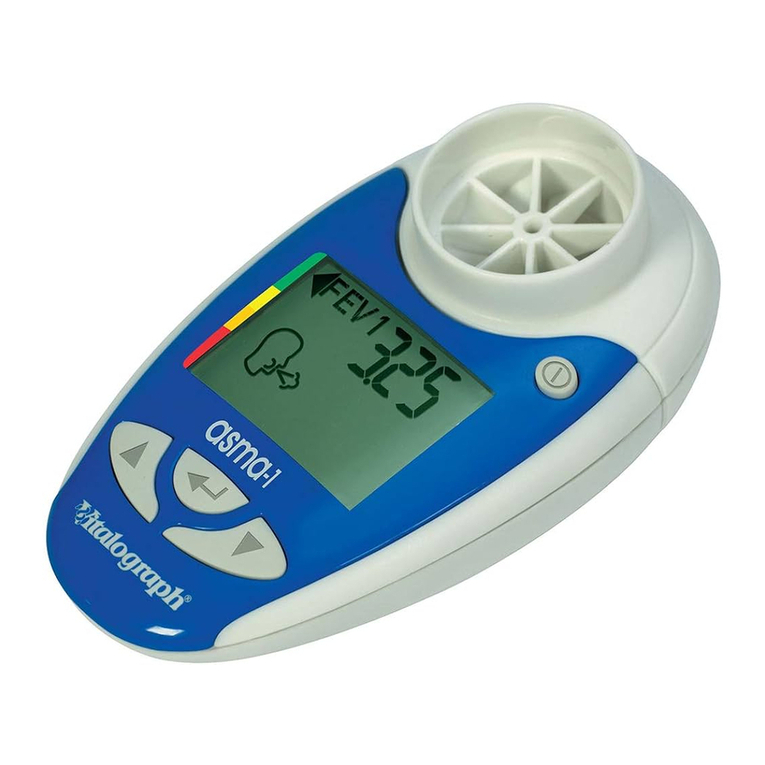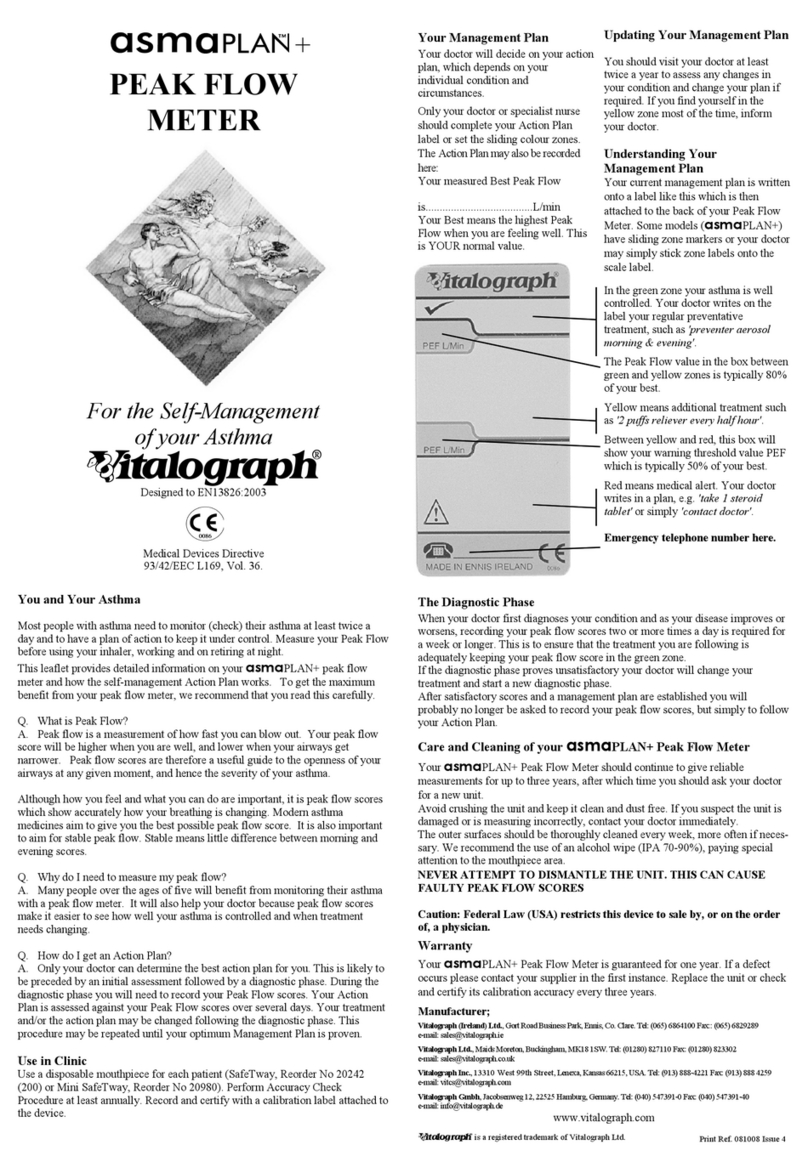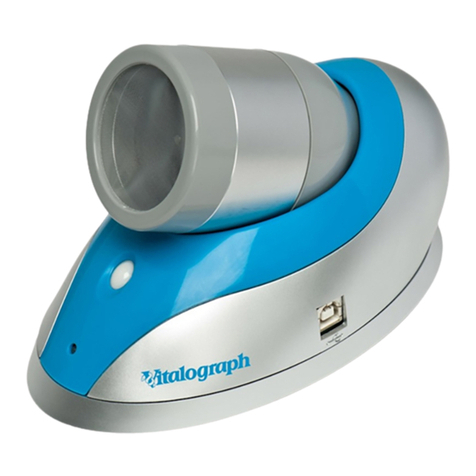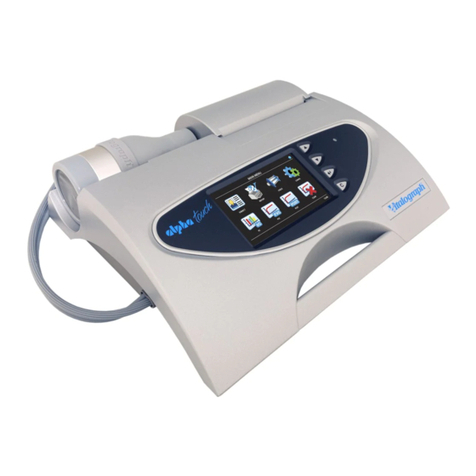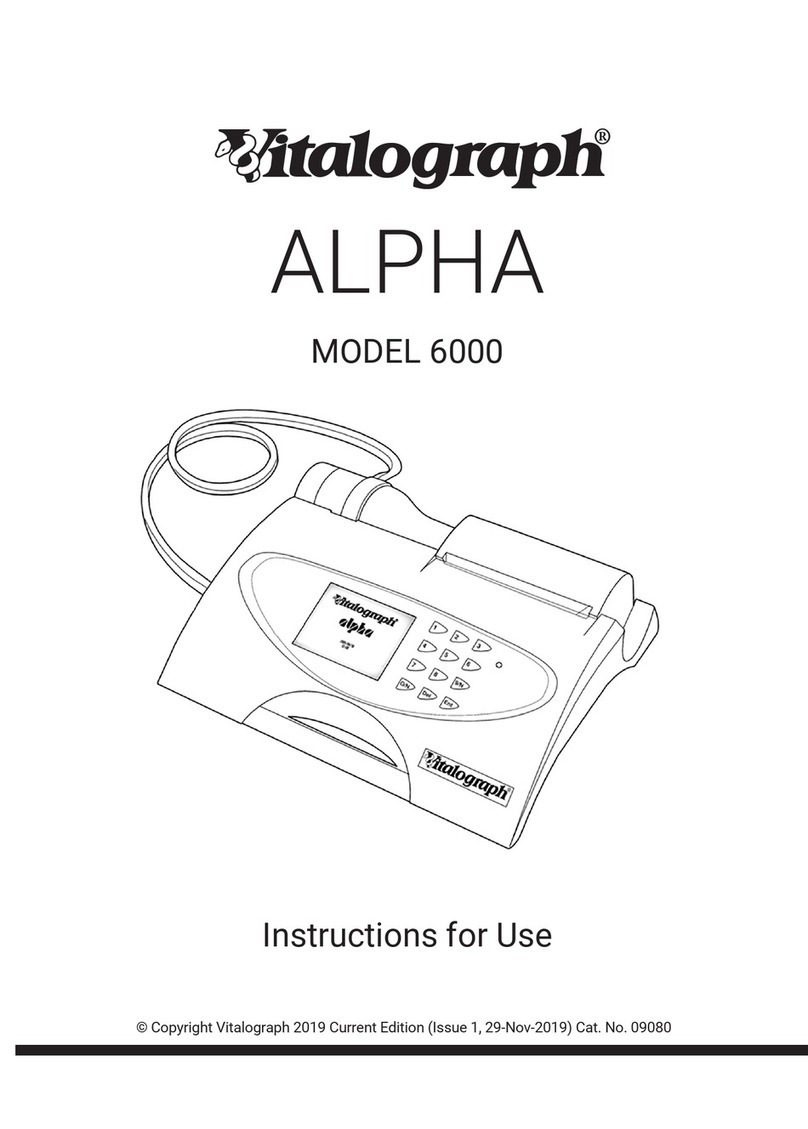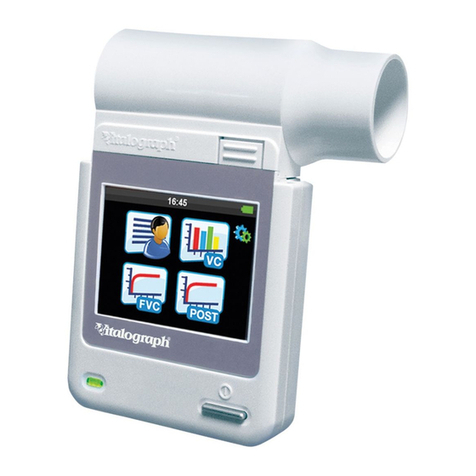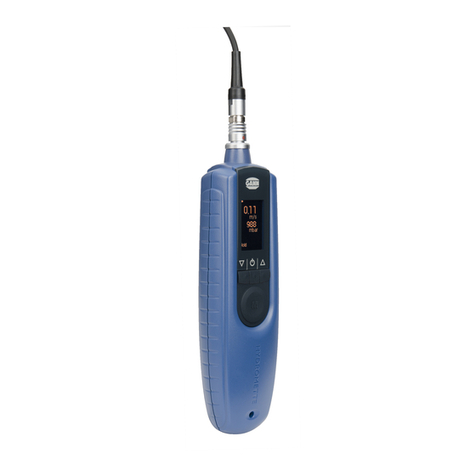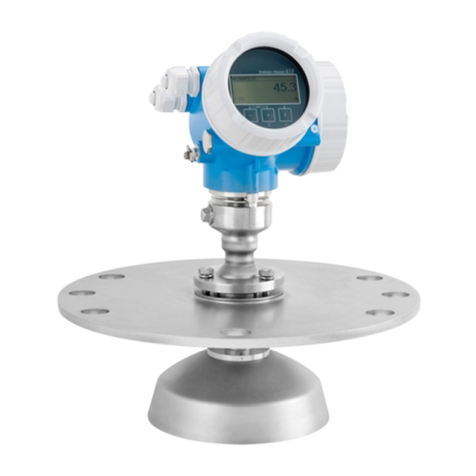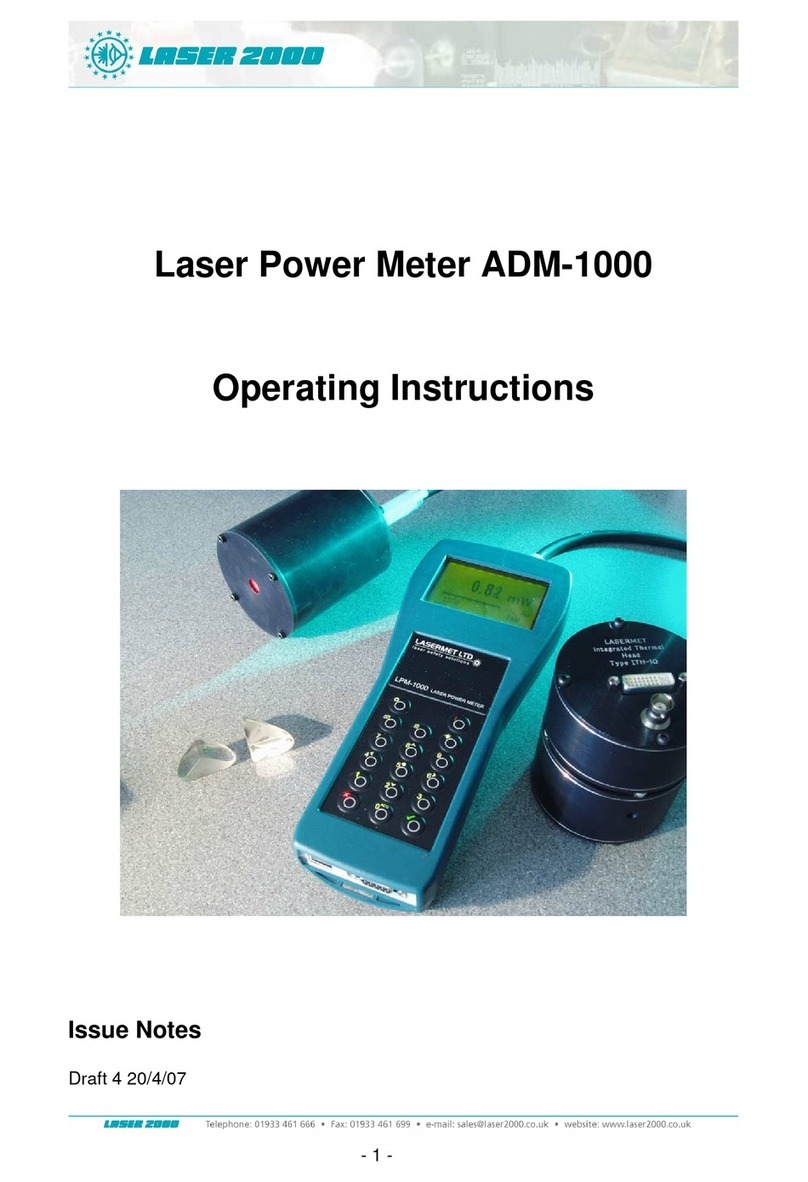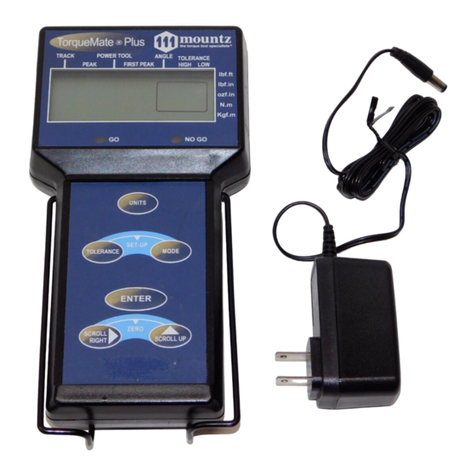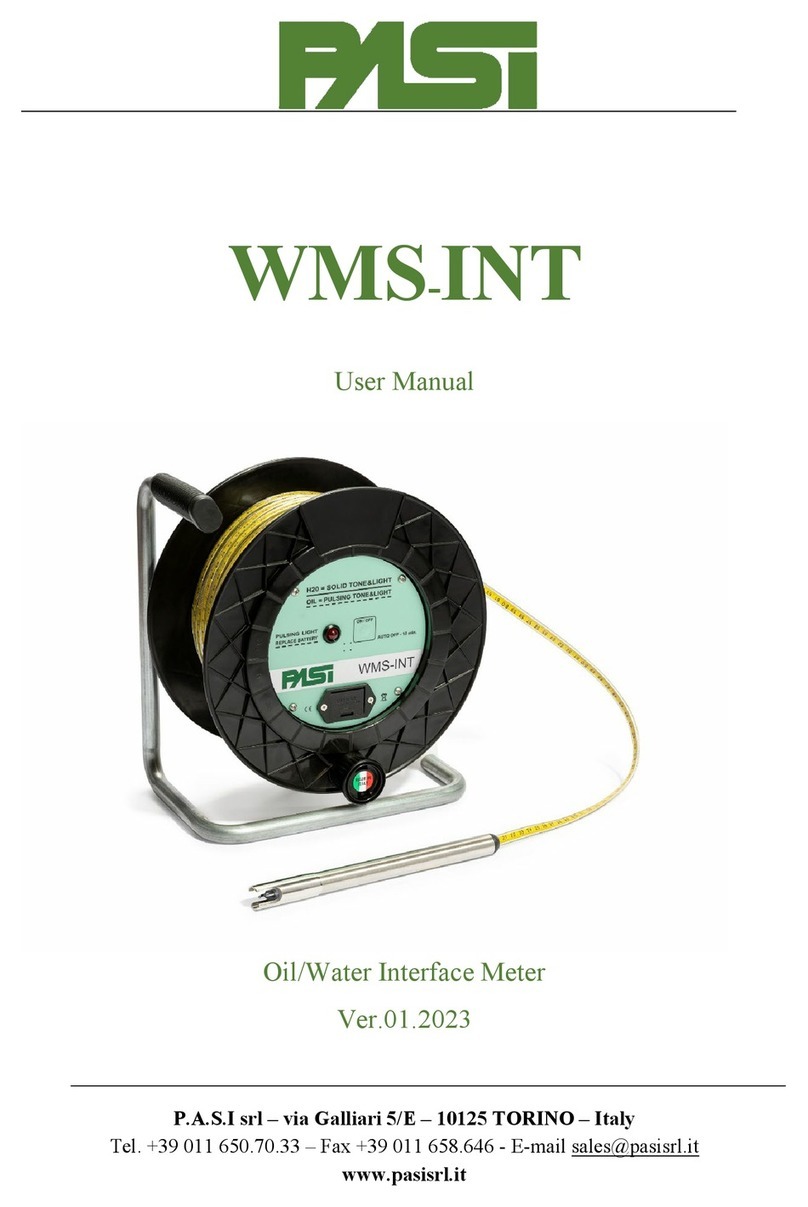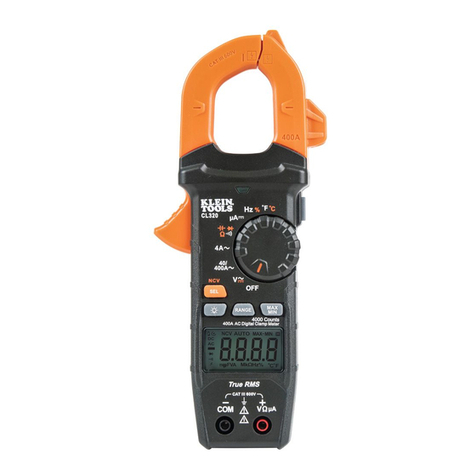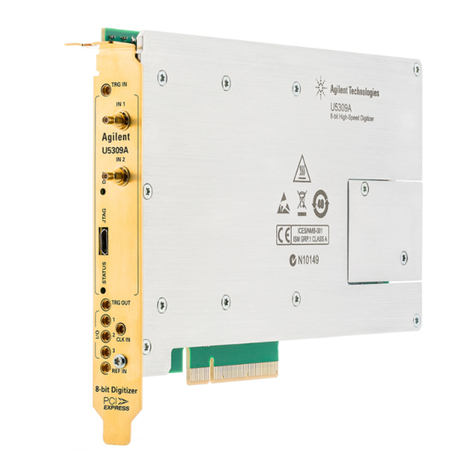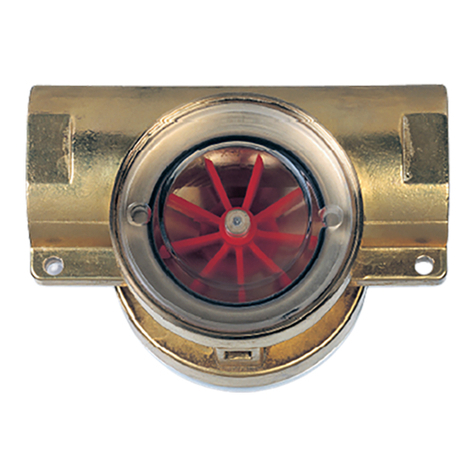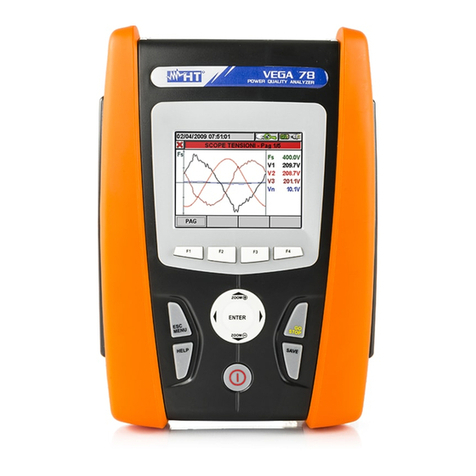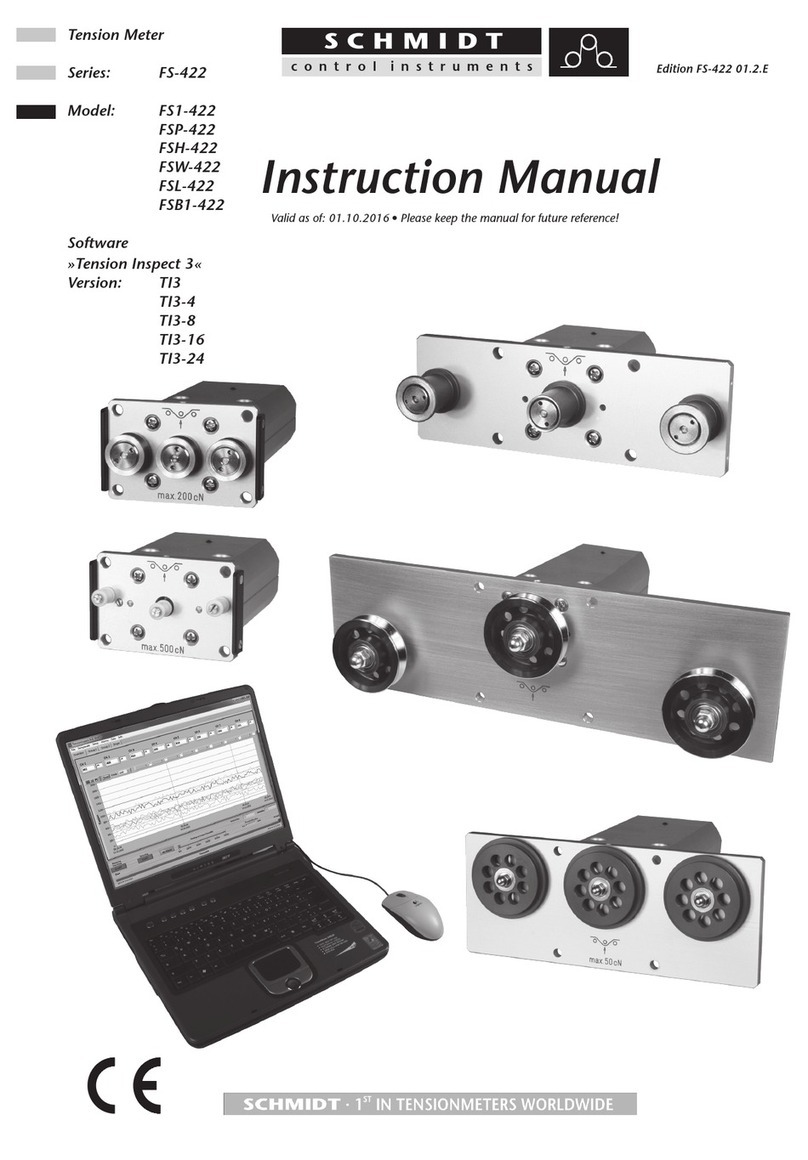16
CLEANING AND DISINFECTING
General Recommendation
To reduce the risk of cross infection the use of SafeTway®mouthpieces is
recommended. A Risk Assessment should be carried out to assess the risks
presented to both operator and subject, and an action plan devised by the
facility to minimise the chance of cross infection occurring, particularly
where known-infectious or immuno-deficient subjects are being tested.
An assessment should be made of methods of decontamination available to
the operator, and their effectiveness against potential risks - a table of
materials used in the Vitalograph micro is provided below to assist in this.
It is recommended that in cases of high risk with no effective disinfection methods available, that the contaminated parts are disposed of. For this
device, the Flowhead Assembly: FLOWHEAD COMPLETE.
Routine Practice
A new mouthpiece (SafeTway mouthpiece) should be used for each
subject. A period of at least 5 minutes should be allowed between subjects
to allow settling of aerosolised particles.
It is recommended that the Flowhead Assembly be regularly cleaned
according to the guidelines of the user’s facility and replaced as a part of
the routine annual service.
In the event of visible contamination to the FLOWHEAD - it should be
cleaned and disinfected or replaced. It should also be replaced in the event
of damage.
All parts of the Vitalograph micro require cleaning, i.e. the removal of
visible particulate contamination. The parts of the Vitalograph micro that
make up the flowhead also require disinfecting.
Hygiene
It is vital for the user to set guidelines for protective hygiene measures
whilst performing spirometry testing. There are three main potential
sources of cross contamination, skin contact; aerosolised particles and
saliva/body fluids. By far the most important is the last item – a minimum
requirement is to use a new disposable mouthpiece for each subject tested.
We recommend using the SafeTway mouthpiece. We also recommend that
a period of at least 5 minutes be allowed between subjects. This allows
aerosolised organisms to be removed by gravitational sedimentation
between tests. (Am J Respir Crit Care Med Vol 159. pp 610-612, 1999)




















